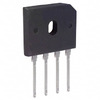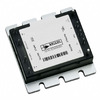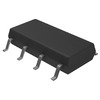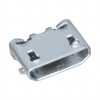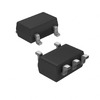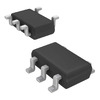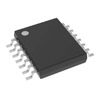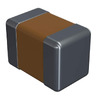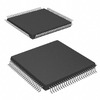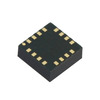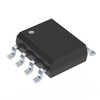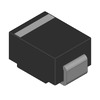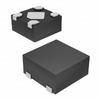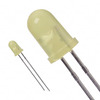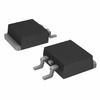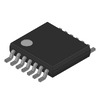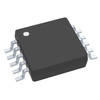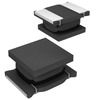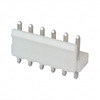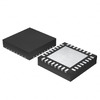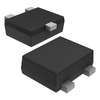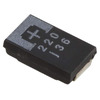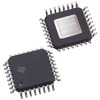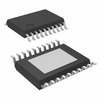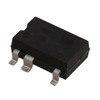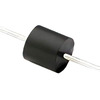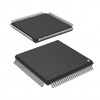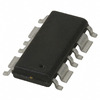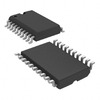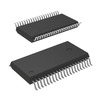LMR400 vs RG8 Coaxial Cable Comparison Guide
This article explores the features, uses, and comparisons of LMR400 and RG8 coaxial cables, helping you understand which cable might be the best fit for your needs. You'll find clear information on each cable’s characteristics, applications, and performance differences to make choosing the right one easier.Catalog
[IMAGE OF LMR400]
Introduction to LMR400 Coaxial Cable
Times Microwave's LMR®-400 coaxial cable brings together flexibility, low signal loss, and durable RF shielding, designed for reliable performance. Its narrow bend radius makes it easy to maneuver, especially in areas where space is tight. This cable minimizes signal loss more effectively than other cables of similar size, offering about 90 dB of RF shielding, which reduces interference in environments where electromagnetic signals might cause issues. Suitable for both indoor and outdoor applications, the LMR-400 cable fits into a variety of setups requiring a low-loss, flexible RF cable, including WLL, GPS, LMR, WLAN, WISP, WiMax, SCADA, and mobile antennas. It also serves as a replacement for the RG-8 cable, making it a versatile choice across multiple applications.
Note: LMR® is a registered trademark of Times Microwave Systems.
Overview of RG8 Coaxial Cable
Pasternack’s RG8 coaxial cable is designed to be flexible and reliable. This 50-ohm cable features a polyethylene (PE) dielectric and a PVC jacket with a thickness of 0.405 inches. It operates efficiently up to frequencies of 1 GHz, providing an attenuation of 8 dB at this level and a maximum power rating of 190 watts. With its durable build, the RG8 cable can handle various RF and microwave needs, making it a practical option for transmitting radio signals or other RF applications. Pasternack offers this cable as part of a broad range of RF, microwave, and millimeter-wave components, with options for same-day shipping. Custom cable assemblies can also be built and shipped quickly, allowing users to get tailored solutions with speed and ease.
Key Features Comparison: RG8 vs LMR400
Main Characteristics of LMR400
• Pricing
Priced per foot, LMR400 gives flexibility to purchase only what you need for your setup, minimizing waste and cost.
• Cable Type
LMR400 is designed as a low-loss, flexible coaxial cable, making it suitable for both indoor and outdoor applications.
• Impedance
With a 50-ohm impedance, LMR400 ensures stable signal flow, fitting the requirements of most RF applications.
• Center Conductor
The center conductor is made of Bare Copper Covered Aluminum (BCCAI), giving a balance between performance and durability.
• Jacket Material
Made of Polyethylene (PE), the jacket protects the cable from environmental elements, making it suitable for various conditions.
• Outer Diameter
The cable has an outer diameter of .405 inches, which makes it compatible with many standard connectors.
• Indoor/Outdoor Use
LMR400 is designed for both indoor and outdoor use, allowing it to handle different installation needs without performance loss.
• RG-8 Replacement
It serves as a drop-in replacement for RG-8 cables, offering better flexibility and lower signal loss in the same applications.
• Attenuation at Different Frequencies
At 900 MHz, attenuation is 3.9 dB per 100 feet, and at 2.4 GHz, it is 6.65 dB per 100 feet, ensuring low signal loss.
• Applications
Ideal for WLL, GPS, LMR, WLAN, WISP, WiMax, SCADA, and mobile antennas, LMR400 suits a wide range of wireless systems.
• Maximum Length
Available in continuous lengths up to 1000 feet, LMR400 can handle extended runs without needing additional connectors.
Main Characteristics of RG8
• Conductor Material
RG8 features a bare copper conductor, known for its ability to provide reliable signal transmission.
• Insulation
Solid low-density polyethylene is used for insulation, adding durability to the cable while maintaining flexibility.
• Shielding
The cable has a bare copper shield, which reduces external interference, keeping your signal stable.
• Jacket Material
The jacket is made of contaminating PVC, Type 1 per MIL-C-17, offering basic protection, but not ideal for harsh outdoor environments.
• Jacket Color
The black jacket provides a simple, neutral appearance suitable for most installations.
• Center Conductor Size
The 12 AWG stranded copper center conductor is durable and capable of handling higher power levels.
• Shielding Quality
With 95% bare copper braid shielding, it provides decent interference protection for audio and radio frequency applications.
• Impedance
RG8 is a 50-ohm cable, making it compatible with standard RF applications and most commercial radio equipment.
• Certification
UL Listed, this cable meets safety standards, giving confidence in installations that require regulatory compliance.
• Availability
Sold per foot, you can purchase RG8 in the exact length needed for your project.
• Maximum Length
RG8 is available in lengths up to 1000 feet, making it suitable for installations that require longer cable runs.
Applications: RG8 vs LMR400
Use Cases of LMR400
• Wireless Communication Systems
LMR400 is commonly used in wireless communication systems for transmitting data over long distances without signal degradation.
• RG8/9913 Replacement
Designed as a drop-in replacement for RG8/9913 air-dielectric cables, LMR400 offers similar form factor but with enhanced performance.
• Short Antenna Connections
This cable is ideal for connecting to short antennas, helping to maintain signal strength over short to medium runs.
• Feeder Runs
It’s often used as a feeder cable, which is the line that carries the signal to and from the antenna in communication systems.
• Low-Loss Routing
LMR400 is easy to route in confined spaces, making it an excellent choice for installations where flexible but low-loss cable is required.
Use Cases of RG8
• Radio Transmission
RG8 is suitable for carrying radio transmission signals, widely used in commercial and amateur radio setups.
• Audio Control Rooms
In audio control rooms, RG8 is often chosen for its shielding capabilities, helping to prevent unwanted interference in audio signals.
• Radio Stations
Used in radio stations, RG8 handles the high-frequency transmission required for broadcasting.
• External Antenna Connections
RG8 is commonly used for connecting external radio antennas, providing a reliable link between the radio and antenna systems.
Comparison of Attenuation vs Frequency: LMR400 and RG8
5.1. LMR400 Attenuation vs Frequency
[IMAGE OF LMR400 Attenuation vs Frequency]
5.2. RG8 Attenuation vs Frequency
[IMAGE OF RG8 Attenuation VS Frequency]
Specifications for LMR400 vs RG8
[TABLE OF Specifications]
LMR400 and RG8 Comparison
When comparing LMR400 and RG8 cables, both have a 50-ohm impedance, but they differ significantly in performance attributes such as attenuation and frequency range. The LMR400 cable stands out with a lower attenuation rate—4.25 dB at 1 GHz compared to RG8’s 8 dB—which means it loses less signal strength over distance. Additionally, LMR400 can operate at frequencies up to 6 GHz, whereas RG8 is limited to 1 GHz. Temperature-wise, LMR400 can handle up to 85°C, while RG8 can operate up to 80°C. Designed to replace lower-quality RG-8 cables, LMR400 offers increased flexibility, simpler installation, and minimal signal loss, making it an optimal choice for setups where maintaining signal quality over distance is essential.
LMR400 Manufacturer Information
Times Microwave Systems is a well-established provider of coaxial transmission lines, serving various industries, including military, aerospace, wireless communications, and industrial applications. They offer a broad range of RF and microwave transmission solutions designed to meet both high-performance requirements and commercial volume needs. With production facilities in the United States and China, Times Microwave Systems can cater to applications ranging from a few kHz up to 110 GHz. Since 2009, Times Microwave has been a part of Amphenol Corporation, one of the largest interconnect component manufacturers worldwide. This connection has further enabled them to offer advanced solutions in electrical, electronic, and fiber-optic connectors, as well as specialized coaxial and other cabling solutions.
Frequently Asked Questions [FAQ]
1. Is LMR-400 the same as RG-58?
LMR-400 and RG-58 are different types of coaxial cables. LMR-400 has lower signal loss and is thicker and less flexible than RG-58, making it more suitable for applications that need a stable signal over longer distances. RG-58, on the other hand, is lighter and more flexible, but it may not provide the same level of performance for high-frequency applications.
2. What is LMR-400 cable typically used for?
LMR-400 is often used as a replacement for RG8/9913 air-dielectric cables. It’s ideal for applications requiring low signal loss and is commonly used in wireless communication systems, antenna connections, and feeder lines, where keeping the signal clear and strong is a priority.
3. Are there cables better than LMR-400?
There are other cables that may suit specific needs, such as RG-8, RG 213, and RG 214, but these generally have higher signal loss than LMR-400. LMR-400 is a popular choice because it combines durability, lower signal loss, and a flexible design, making it versatile for many applications.
4. What are typical uses for RG8 cable?
RG8 is often used to transmit radio signals and is commonly found in audio control rooms, radio stations, and as connections for external radio antennas. Its construction makes it effective for carrying signals without much interference, which is helpful in environments where clear signal transmission is necessary.
5. How does RG8 compare to RG-58?
RG8 is thicker and can carry stronger signals than RG-58. It has a 12 AWG wire gauge, which supports better signal quality over longer distances, making it more suitable for amateur radio or applications requiring stable transmission. RG8X, a variation, is thinner (16 AWG) but still provides similar signal performance.
Om os
ALLELCO LIMITED
Læs mere
Hurtig forespørgsel
Send en forespørgsel, vi svarer med det samme.
Ofte stillede spørgsmål [FAQ]
1. Is LMR-400 the same as RG-58?
LMR-400 and RG-58 are different types of coaxial cables. LMR-400 has lower signal loss and is thicker and less flexible than RG-58, making it more suitable for applications that need a stable signal over longer distances. RG-58, on the other hand, is lighter and more flexible, but it may not provide the same level of performance for high-frequency applications.
2. What is LMR-400 cable typically used for?
LMR-400 is often used as a replacement for RG8/9913 air-dielectric cables. It’s ideal for applications requiring low signal loss and is commonly used in wireless communication systems, antenna connections, and feeder lines, where keeping the signal clear and strong is a priority.
3. Are there cables better than LMR-400?
There are other cables that may suit specific needs, such as RG-8, RG 213, and RG 214, but these generally have higher signal loss than LMR-400. LMR-400 is a popular choice because it combines durability, lower signal loss, and a flexible design, making it versatile for many applications.
4. What are typical uses for RG8 cable?
RG8 is often used to transmit radio signals and is commonly found in audio control rooms, radio stations, and as connections for external radio antennas. Its construction makes it effective for carrying signals without much interference, which is helpful in environments where clear signal transmission is necessary.
5. How does RG8 compare to RG-58?
RG8 is thicker and can carry stronger signals than RG-58. It has a 12 AWG wire gauge, which supports better signal quality over longer distances, making it more suitable for amateur radio or applications requiring stable transmission. RG8X, a variation, is thinner (16 AWG) but still provides similar signal performance.

Hvordan bruger jeg 74LS86 IC i digitale kredsløb?
på 2024-11-10
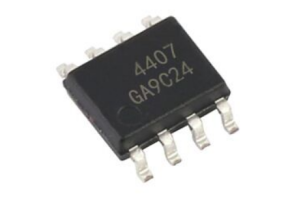
Alt hvad du har brug for at vide om AO4407A MOSFET
på 2024-11-10
Populære indlæg
-

Hvad er GND i kredsløbet?
på 1970-01-01 3132
-

RJ-45 Connector Guide: RJ-45 Stikfarvekoder, ledningsordninger, R-J45-applikationer, RJ-45 datablad
på 1970-01-01 2681
-

Forståelse af strømforsyningsspændinger i elektronik VCC, VDD, VEE, VSS og GND
på 0400-11-15 2244
-
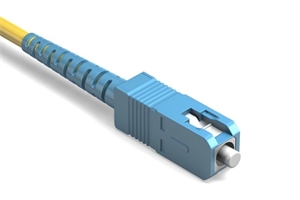
Fiberstikstyper: SC vs LC og LC vs MTP
på 1970-01-01 2189
-
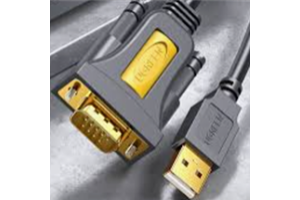
Sammenligning mellem DB9 og RS232
på 1970-01-01 1804
-
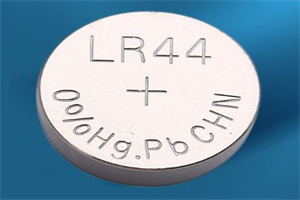
Hvad er et LR44 -batteri?
Elektricitet, den allestedsnærværende kraft, roligt gennemsyrer alle aspekter af vores daglige liv, fra trivielle gadgets til livstruende medicinsk udstyr, det spiller en stille rolle.Imidlertid er det ingen let opgave at gribe ind i denne energi, især hvordan man opbevarer og effektivt udsender den.Det er på denne baggrund, at denne artikel vil fokusere på en type møntcellebatteri, der kan ...på 1970-01-01 1780
-

Forståelse af de grundlæggende elementer: induktansresistens, og kapacitet
I den komplicerede dans inden for elektroteknik tager en trio af grundlæggende elementer centrum: induktans, modstand og kapacitans.Hver bærer unikke træk, der dikterer de dynamiske rytmer af elektroniske kredsløb.Her går vi på en rejse for at dechiffrere kompleksiteten af disse komponenter for at afsløre deres forskellige roller og praktiske anvendelser inden for det store elektriske o...på 1970-01-01 1732
-

CR2430 Batteri Comprehensive Guide: Specifikationer, applikationer og sammenligning med CR2032 -batterier
Hvad er CR2430 -batteri?Fordele ved CR2430 -batterierNormCR2430 Batteri applikationerCR2430 ækvivalentCR2430 vs CR2032Batteri CR2430 størrelseHvad man skal kigge efter, når man køber CR2430 og ækvivalenterDatablad PDFOfte stillede spørgsmål Batterier er hjertet i små elektroniske enheder.Blandt de mange tilgængelige typer spiller møntceller en afgørende rolle, der ofte findes i regnemas...på 1970-01-01 1683
-

Hvad er RF, og hvorfor bruger vi det?
Radiofrekvens (RF) -teknologi er en vigtig del af moderne trådløs kommunikation, der muliggør datatransmission over lange afstande uden fysiske forbindelser.Denne artikel dækker det grundlæggende i RF og forklarer, hvordan elektromagnetisk stråling (EMR) gør RF -kommunikation mulig.Vi vil udforske principperne for EMR, oprettelse og kontrol af RF-signaler og deres omfattende anvendelser.Art...på 1970-01-01 1681
-

Omfattende guide til HFE i transistorer
Transistorer er afgørende komponenter i moderne elektroniske enheder, hvilket muliggør signalforstærkning og kontrol.Denne artikel dækker i viden omkring HFE, herunder hvordan man vælger en transistors HFE -værdi, hvordan man finder HFE og gevinsten af forskellige typer transistorer.Gennem vores udforskning af HFE får vi en dybere forståelse af, hvordan transistorer fungerer og deres rolle...på 5600-11-15 1642

